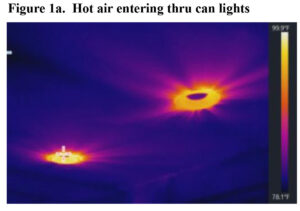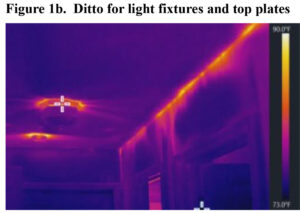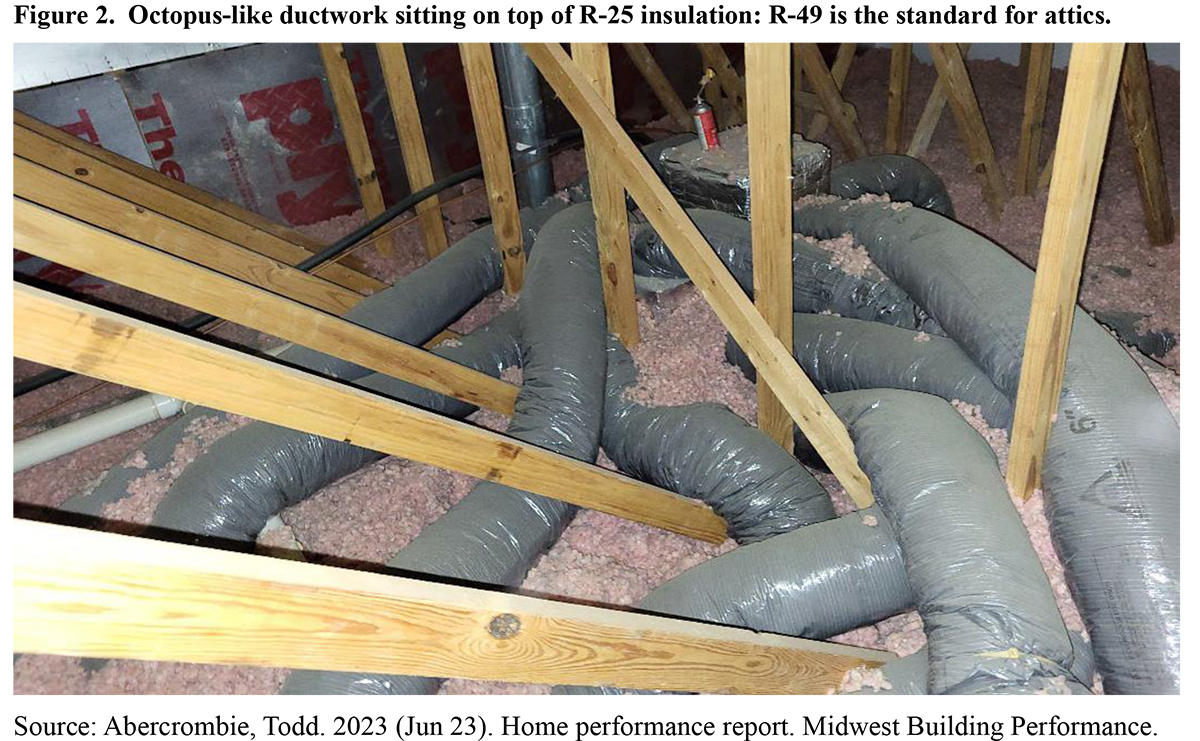It’s easy to see if you need an energy audit, which are not cheap for the pocketbook; but they are invaluable to the environment with a big payoff in energy savings
Energy audits aren’t cheap, but it is easy to find out if you need one. Gather a year’s electricity and gas bills and add up the kilowatt hours and therms. Multiply therms by 29.307 to convert them to kilowatt hours (kWh). Add the two kWh figures together and divide by the square feet of a home’s heated/cooled space. If the resulting Energy Intensity Index is 12 or above, you need an audit (Krigger & Dorsi 2004).
Example: my wife and I are moving into a small condo which used 5,162 kilowatts of electricity and 547 therms of gas in 2022. When converted (547 x 29.307), the therms equal 16,031 kWh. So, the Energy Intensity Index for our 1,245 square foot condo is 17 [(5,162+16,031) / 1,245 = 17.02].
Did we ever need an audit! So I called in Todd Abercrombie from Midwest Building Performance. His 42-page report details our condo’s problems and lists steps to fix them. As expected, the unit is leaky. Auditors depressurize a home with a blower door to -50 Pascals and then use an infrared camera to document where air is entering the house.
As Figure 1 shows, hot outside air (illuminated) is entering the colder condo through can lights, electric penetrations in the ceiling and exterior walls, along window molding, and through all top plates in the attic. All these points of entry will be sealed — a low-cost solution with rapid payback.
The next problem concerns inadequate (nominal R-26) attic insulation — fiberglass to boot, which is a lousy insulator. Worse yet, R-4 insulated flex ducts sit on top of the insulation (Fig. 2).
Placing poorly insulated flex ducts in unconditioned attics is a Big No-No (Holliday 2017, 2018); up to 30% of heated or cooled air can be lost through such ducts. Yet, exposed ducts are common in buildings with crawl spaces or slab-on-grade construction. This shortcut is cheaper and faster for production builders, and they get away with it because home buyers are unaware of the forever high utility bills that stem from such corner cutting.
All in all, Abercrombie’s recommendations will reduce by half my condo’s energy consumption (more if I opt for such things as R-60 attic insulation).
It identifies another potential problem: The condo’s aged furnace generates 40,000 BTUs of heat but the building requires only 29,000 BTU. After the insulation upgrades, the condo will need less than 23,000 BTUs. And the current 2-ton air conditioner should be downsized to 1.2 tons, perhaps less. In sum, the audit guides the “right sizing” of a new HVAC system. No more supersized, underperforming units please!
Last column I stated I could not install a heat pump water heater in my small utility closet. Wrong (Rheem 2023). I can install one if my utility closet has an upper and lower grill (for air circulation), which it does, or if the closet door is louvered, or if the heat pump is connected to the furnace’s duct work. In short, I will be installing a heat pump water heater.
Finally think about the reduction in both utility bills and greenhouse gas emissions if America’s energy hoggish homes were buttoned up. It would be huge. If you want to do something about climate change, start with your own home.
References
Krigger, John and Chris Dorsi. 2004. Residential Energy: Cost Savings and Comfort for Existing Buildings. Helen, MT: Saturn Resource Management.
Holladay, Martin. 2017 Musings of an energy Nerd: Toward an Energy Efficient Home. Newtown, CT: Taunton Press.
Burying Ducts in Attic Insulation. 2018 (July 27). Green Building Advisor; https://www.greenbuildingadvisor.com/article/burying-ducts-in-attic-insulation
Rheem 2023. Professional Prestige ProTerra™ Specification Sheet; https://rmc-cdn.s3.amazonaws.com/media/uploads/iat/sites/36/2020/04/HP-350-5-RHEEM-GenV-hybrid_0403.pdf




